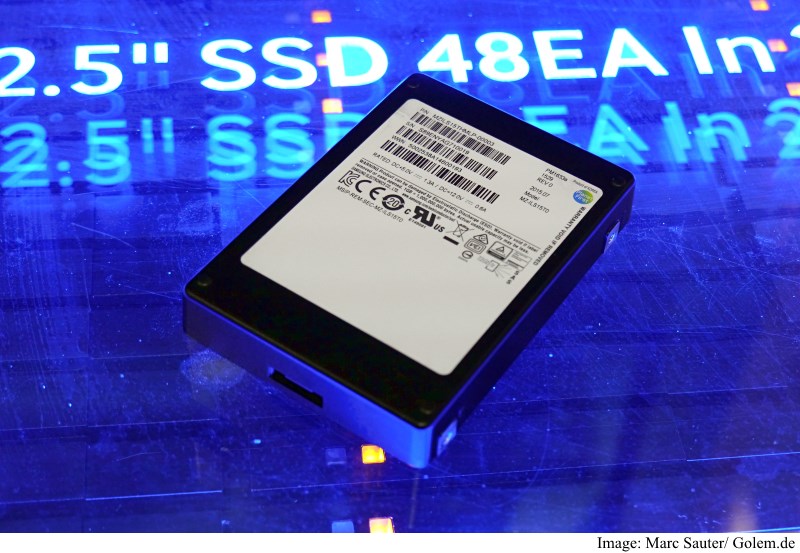Samsung may have announced bigger products in the Galaxy Note 5 and the Galaxy S6 Edge Plus, but that doesn’t take away from the fact that the company showed off a nearly 16-terabyte flash hard drive at the Flash Memory Summit this week.
This is a pretty significant announcement. Flash memory is generally faster than its disc-spinning counterpart, although it generally doesn’t offer the highest amounts of storage. This drive, however, offers much more than the largest conventional drives made by Western Digital or Seagate, which max out at around 10 TB.
So how is Samsung able to make such a large hard drive – its actual capacity clocks in at 15.36 TB? The secret is the company’s new 256-GB NAND flash die, which is two times as impressive as the 128 GB NAND dies that were put into commercial use by storage makers last year. To create the die, Samsung was able to fit 48 layers of 3-bits-per-cell 3D vertical NAND (V-NAND) into one die. Last year it was 36 layers, and the year before that 24.
Basically, Samsung combined its latest die technology with a 3D stacking technique that helped it fit more storage into the same amount of space. While traditionally flash chips are arranged in a 2-dimensional way, Samsung stacked a number of layers of memory cells onto each other, enabling a greater storage density.
Samsung announced the new tech by showing off a server with 48 of these new hard drives at the summit in California. It is able to handle up to 2 million input/output operations each second, far more than the 90,000 that the average consumer solid-state drive is able to handle.
All of the tech is able to fit into a 2.5-inch hard drive enclosure, although it’s important to note that the enclosure is a little thicker than hard drive modules often found in laptop computers.
Samsung did not yet announce how much these 16 TB PM1633a hard drives would cost; however, it did say that the drive would be aimed at the enterprise rather than the consumer. Some estimate the drive could cost $5,000. Samsung currently offers a 2.5-TB hard drive that costs $1,000.
Of course, eventually this technology will trickle down to the consumer. It is not yet known exactly when we will see consumer hard drives this large, but with advancements in tech it is likely that it will be in the next few years. Hopefully we will see them just in time to store our 4K movies.
![]()































